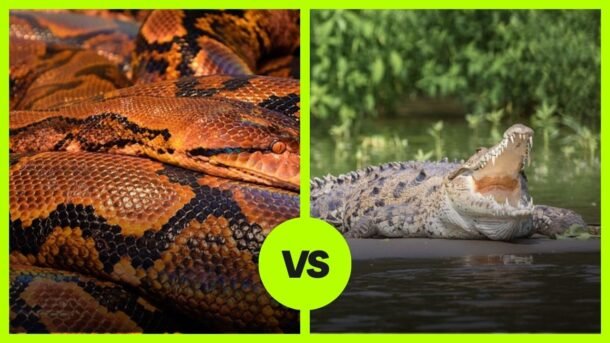Introduction: Cold-Blooded Brawlers
Okay, are you ready for this one? Anaconda vs. Crocodile! That’s like a nature documentary gone wild, folks. Just thinking about it sends shivers down my spine. We’re talking about two apex predators, both with the potential to reach monstrous sizes. This is gonna be a good one, so let’s dive right in!
Anaconda: The Squeezing Nightmare
First up, the Green Anaconda, the heavy-hitter of the snake world. These bad boys can grow up to 29 feet long and weigh more than 550 pounds. They’re ambush predators, lurking in the waters of the Amazon, waiting for their next meal to come along. Once they strike, it’s all about the squeeze—their constriction can exert pressure of up to 90 pounds per square inch! That’s enough to break bones and cause internal organ failure. Yikes!
Crocodile: The Armored Tank
Now let’s talk about the crocodile, the living, breathing embodiment of prehistoric terror. Specifically, we’re gonna focus on the Saltwater Crocodile, one of the largest and most aggressive species out there. These bad boys can grow up to 23 feet and weigh a staggering 2,200 pounds! Plus, their bite force is no joke—we’re talking about 3,700 pounds per square inch. That’s like getting squashed by a small car!
Stealth vs. Power: Who’s the Better Hunter?
Anacondas are all about the ambush, lurking in the shadows before lunging at their prey. Crocs are similar, often hiding just below the water’s surface near riverbanks to launch surprise attacks. However, crocs also have armored skin and incredible strength, allowing them to take down large prey like buffalo and even sharks. If it comes down to a head-to-head encounter, the crocodile’s armored body and bite force could give it a significant advantage.
Underwater Tactics: Who Rules the Wetlands?
Both animals are at home in the water, but their tactics differ. Anacondas can stay submerged for up to ten minutes, relying on their stealth and constriction techniques. Crocs, however, can stay underwater for up to an hour and are more agile swimmers thanks to their powerful tails. In an aquatic setting, this could give the crocodile an edge in stamina and mobility.
Bite vs. Constriction: The Tools of the Trade
An anaconda’s main weapon is its ability to constrict and suffocate its prey. They’re used to taking down big creatures like deer and caimans—a smaller type of crocodilian. Yeah, you heard that right; anacondas do prey on smaller crocodilians. On the other hand, a crocodile’s bite is its ace card. If it can get its jaws around the anaconda, that could be game over for the snake.
Environment: Where’s the Showdown Happening?
This battle could take place in a swamp, a river, or even on dry land. Anacondas prefer murky, slow-moving waters, while crocodiles can adapt to various aquatic settings. On land, neither is particularly agile, but the croc’s stronger limbs might give it a slight advantage. If it’s in the water, particularly in deeper or faster-moving currents, the crocodile might have the home-field advantage.
Final Verdict: The Odds
This is a tough one, folks. Both animals are apex predators, adapted to killing efficiently. If the anaconda can get a good grip around the crocodile, it could potentially suffocate it. However, the crocodile’s bite force, armored skin, and greater mobility make it a formidable opponent. I’m giving this one a 65% chance of victory for the crocodile and a 35% chance for the anaconda.




